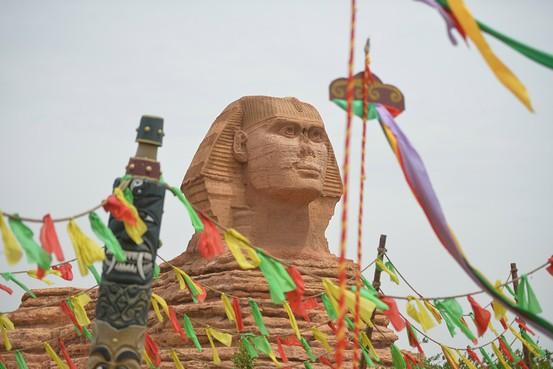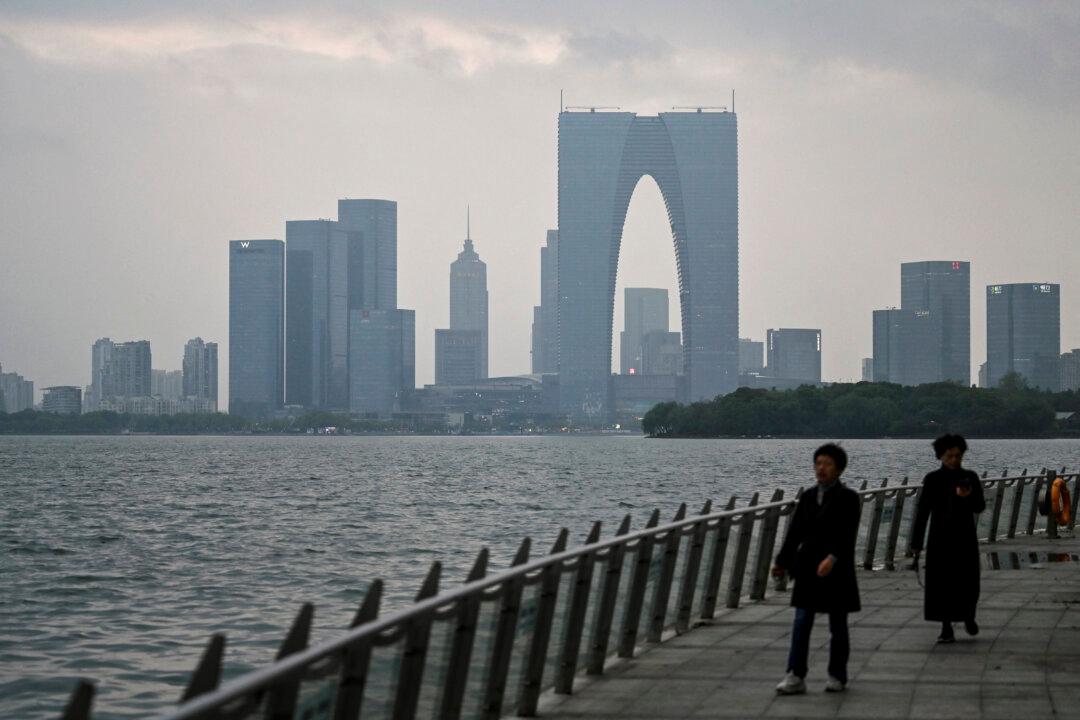Replicas of iconic landmarks from around the world have been (in)famously popping up throughout China, reflecting the marriage of the country’s real estate bandwagon in overdrive with a propensity for knock-offs.
Countless copies of varying scale and quality lie scattered through the country. Below are five.
China’s ‘Temporary’ Sphinx

The fake Sphinx in China. AFP/Getty Images




